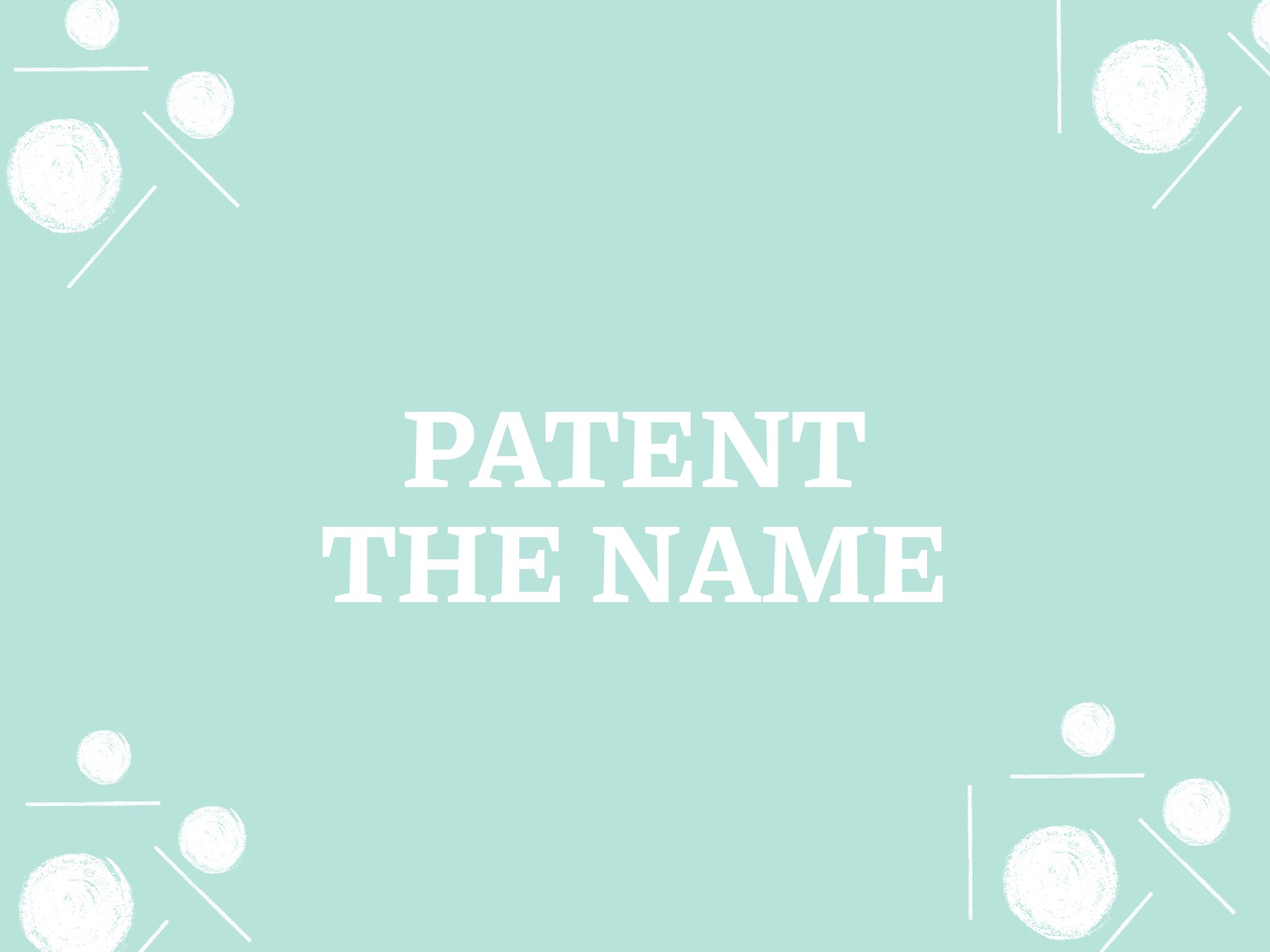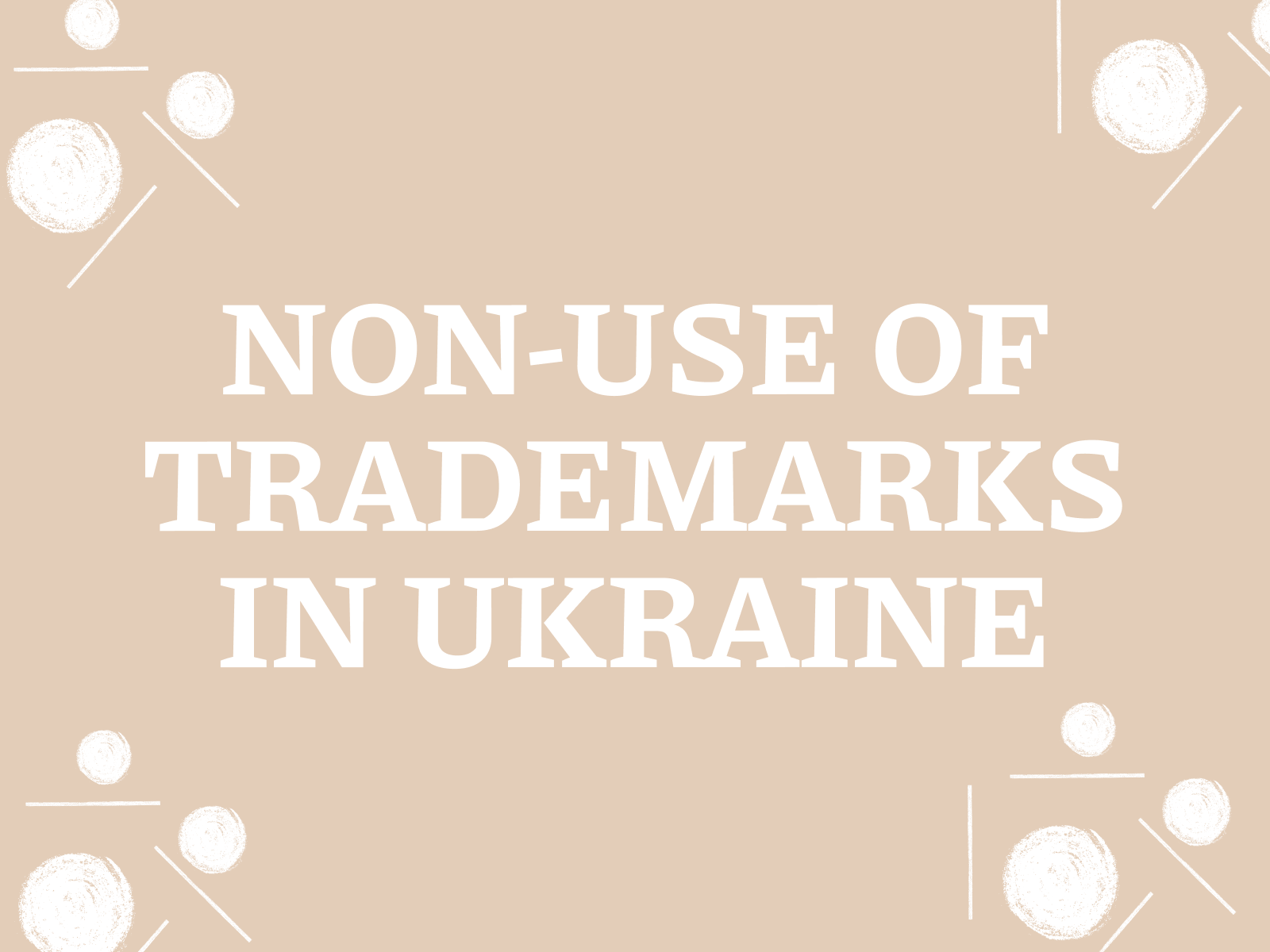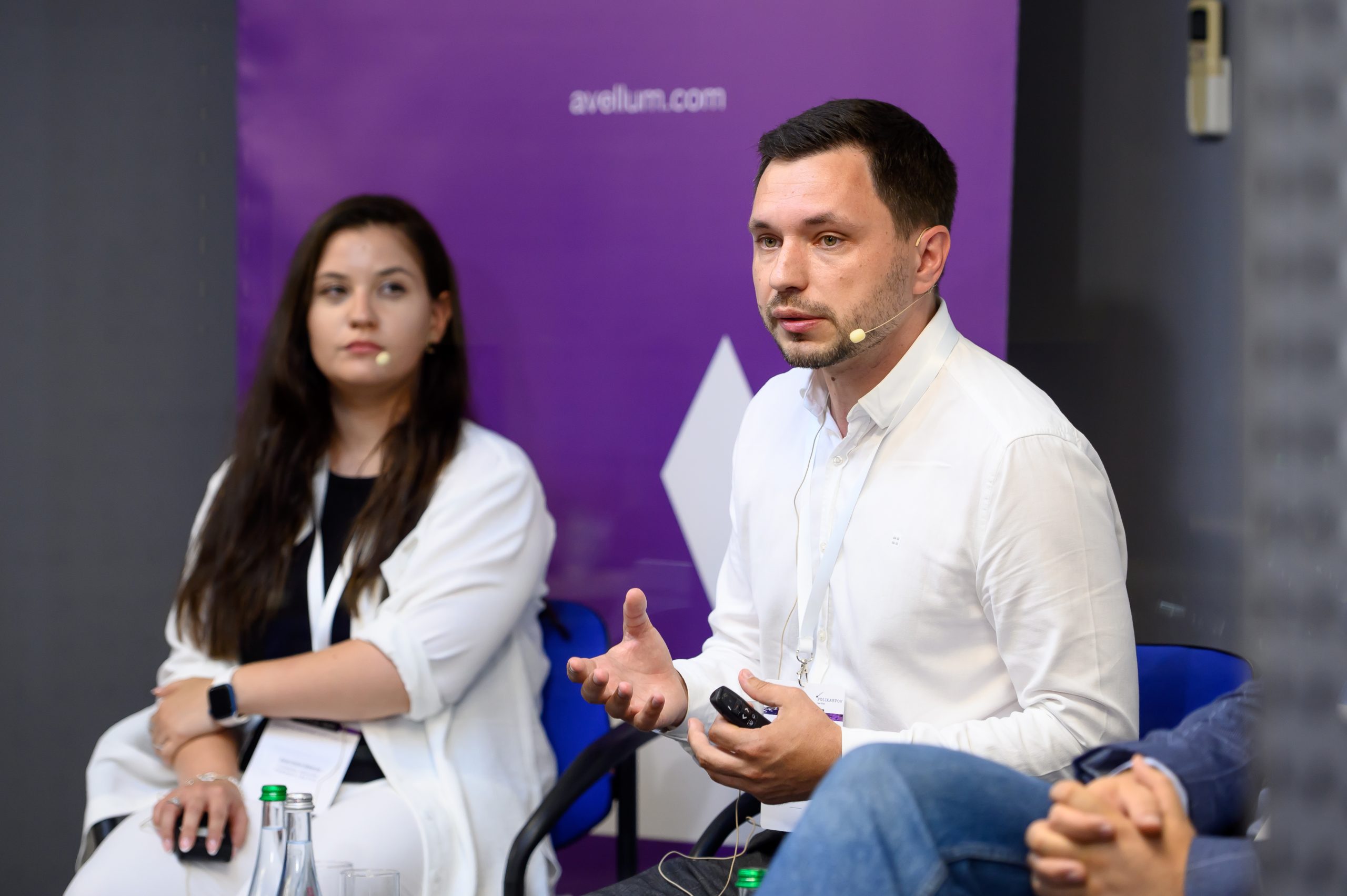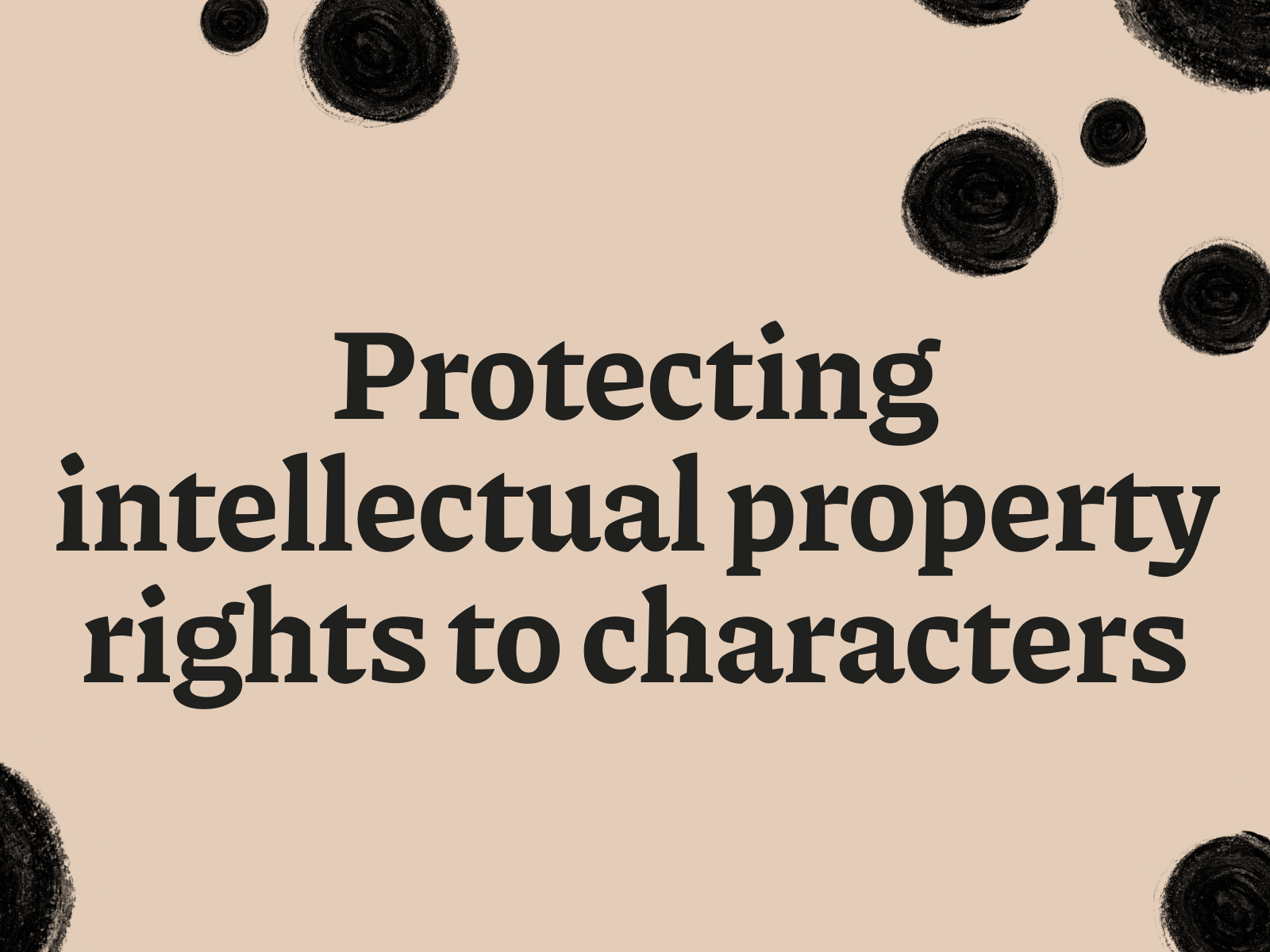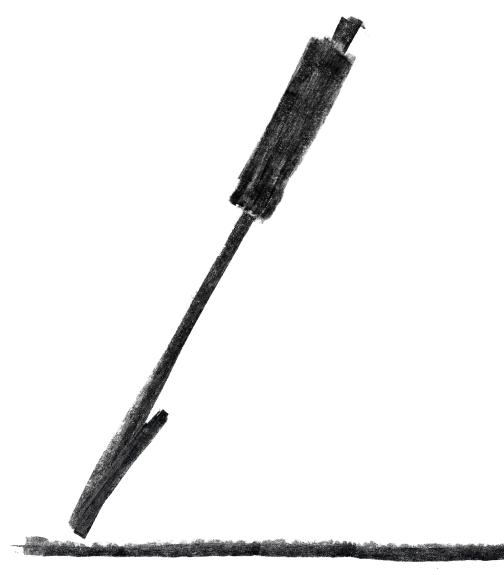A company or product name is more than just a word or phrase. It is the face of your brand, helping you to stand out from the competition and be remembered by consumers. Therefore, it is important to protect this important asset from illegal use by others. In this article, we will tell you how to “patent a name” in Ukraine, although it would be more accurate to say that you should register it as a trade mark. We will look at the difference between a patent and a trademark, the process of registering a name, and the benefits of protecting a company or product name.
Next, we will look at whether it is possible to patent a name and which names can be protected.
Section 1: Is it possible to patent a name?
You often hear the phrase “patent a name”, but is it really possible to patent a company or product name? In this section, we will look into this question and consider what type of legal protection is appropriate for names. You will learn about the difference between a patent and a trademark and understand which names can be protected by law.
Let’s start by looking at the differences between a patent and a trade mark.
Subsection 1.1: The difference between a patent and a trade mark
In order to understand how to properly protect a company or product name, it is important to distinguish between the concepts of a patent and a trade mark. Often these terms are used incorrectly, which can lead to confusion and the wrong choice of protection.
A patent protects technical solutions such as inventions, utility models and industrial designs. It grants the exclusive right to use, manufacture and sell the patented object. Company or product names are not technical solutions, so they cannot be patented.
A trademark is a designation used to identify the goods or services of one manufacturer from those of other manufacturers. It can be a word, an image, a logo, a combination of these elements, or even a sound or smell. Registration of a trademark grants the exclusive right to use it for the goods or services for which it is registered.
Thus, in order to protect a company or product name, it is necessary to register it as
The main differences between a patent and a trademark:
| A feature | Patent | Trade mark |
| Object of protection | Technical solution | Designation for goods or services |
| Validity period | Up to 20 years | 10 years with the possibility of extension |
| The procedure for obtaining | More complicated | Simpler |
| Cost | Higher | Lower |
Understanding the difference between a patent and a trademark will help you choose the right way to protect your name and avoid mistakes.
Next, we will look at which names can be protected as trademarks.
Sub-section 1.2: Which names can be protected?
Not all names can be registered as trademarks. Ukrainian legislation sets certain requirements for names that can be protected as trademarks. Let’s look at the main types of names that can be protected:
- Fancy names: These are names that have no direct connection to the goods or services for which they are used. For example, Apple for computers and electronics. These names are easy to remember and help create a unique brand.
- Arbitrary names: are names that have a common meaning, but are used for goods or services that are not associated with that meaning. For example, “Amazon” for an online store.
- Suggestive names: are names that hint at the characteristics or properties of goods or services. For example, “Head & Shoulders” for anti-dandruff shampoo.
- Descriptive names: are names that directly describe goods or services. For example, “Kyiv Cake” for a cake made in Kyiv. Descriptive names can be registered as
What names cannot be protected?
- Names that are misleading to consumers: for example, the name “Natural juice” for a drink that contains artificial additives.
- Names that are contrary to public order or morality.
- Names that are commonly used to identify certain goods or services: for example, “Bread” for bakery products.
Before applying for trademarkregistration , we recommend that you make sure that your name meets the legal requirements and has a good chance of being successfully registered.
In the following, we will look at the process of registering a name as a trademark.
Section 2: The process of registering a name as a trademark
So, you have determined that your name meets the requirements and can be registered as a trademark. Now it’s time to consider the registration process itself. In this section, we will take a closer look at each stage of registering a name as a trademark in Ukraine – from searching for similar marks to obtaining a certificate.
The first step is the search for confusingly similar marks, which we will discuss in the next section.
Subsection 2.1: Searching for similar marks
Before applying for a trademarkregistration at, you should conduct a thorough search for similar marks. This will allow you to make sure that your name is unique and has a good chance of being successfully registered.
Why is it important to search for similar marks?
- Avoid refusal of registration: if your name is similar to an already registered trademark, you may be refused registration.
- Prevent conflicts with owners of similar marks: you will be able to avoid possible litigation and protect your business from unpleasant consequences.
- Save time and money: you will avoid the costs of filing and processing an application if your name is not unique.
How do I search for similar marks?
You can conduct a search yourself or contact a patent attorney. You can use the following resources to conduct a search on your own:
- UKRNIPI database (Ukrainian National Office of Intellectual Property and Innovations): https://base.uipv.org/ – the official resource for searching for registered and filed trademarks in Ukraine.
- International database https://www.wipo.int/branddb/en/ – allows you to search for trademarks registered in different countries of the world.
Search recommendations:
- Use different spellings: check for different spellings of your name, including synonyms, abbreviations and transliteration.
- Pay attention to the classification: make sure you check for similar marks in the International Classification of Goods and Services (ICGS) classes that are relevant to your business.
- Consult with a specialist: if you have any doubts or difficulties with the search, we recommend that you contact a patent attorney.
Once you are convinced that your name is unique, you can move on to the next stage – preparing and filing an application. We will discuss this in the next section.
Section 2.2: Preparing and submitting the application
After you have made sure that your name is unique, it is time to prepare and submit an application for registration to the UAPTO. This stage requires careful attention and compliance with all the necessary formalities.
Required documents:
To apply for a trademark registration, you will need the following documents:
- An application for registration The application must contain information about the applicant, an image of the trademark (if it contains graphic elements), a list of goods and services for which the applicant requests registration of the trademark (according to the Nice Classification), and other necessary information.
- A document confirming payment of the state fee: The amount of the state fee depends on the number of classes of the Nice Classification for which the applicant seeks to register a trademark.
Application procedure:
A trademarkapplication can be filed online through the electronic cabinet on the website of the Ukrainian Trademark Office or in paper form by mail or in person.
Recommendations for preparing an application:
- Fill in all fields of the application carefully: any mistake or inaccuracy may be grounds for refusal of registration.
- Correctly indicate the classes of the Nice Classification: the choice of classes of the Nice Classification must be justified and relevant to your business.
- Consult a specialist: if you have any difficulties with the preparation of the application, we recommend that you contact a patent attorney.
Once the application is filed, the examination process begins. This will be discussed in more detail in the next section.
Subsection 2.3: Examination and obtaining a certificate
After submission of the application to UKRNOVI, it goes through the examination process, which consists of two stages: formal and qualification.
Formal examination: At this stage, the correctness of the application and the availability of all necessary documents are checked.
Qualification examination: At this stage, the trademark is checked for compliance with the law and for the absence of similar or identical trademarks already registered or filed for registration.
If the examination is successful, UKRNOVO publishes information on the registration of your trademark at From that moment on, a three-month period for filing oppositions by third parties begins. If no oppositions are filed within this period, issues a trademarkcertificate .
A trademarkcertificate is an official document that confirms your exclusive right to use a trademark for the goods and services for which it is registered. The certificate is valid for 10 years with the possibility of further extension.
Obtaining a certificate for the trademark is the final stage of the registration process. From this point on, you can use the ® symbol next to your trademark to indicate that it has been registered and protected.
Next, we will look at the benefits of protecting your company or product name.
Chapter 3: The benefits of protecting a company or product name
You already know how to register a company or product name as a trademark. But why is it so important? In this section, we’ll look at the key benefits of protecting your name as a trademark with. You will learn how registration can help prevent competitors from using your name, increase brand awareness and open up new business opportunities.
We start by looking at how trademarkregistration protects against unfair competition.
Subsection 3.1: Preventing competitors from using the name
One of the main advantages of registering a name as a trademarkat is protection against unfair competition. The trademark registered by gives you the exclusive right to use it for the goods and services for which it is registered. This means that no one else can use an identical or similar name for similar goods or services without your permission.
How to register
- Prohibit use: You can prohibit competitors from using your registered trademark or a similar name. This will help you preserve the uniqueness of your brand and prevent consumer confusion.
- The right to recover compensation: if a competitor infringes your trademark rights , you can take legal action to recover compensation for the damage.
- Strengthening your market position: A registered trademark shows that you are serious and reliable, which helps you to strengthen your market position and gain consumer confidence.
Protection from unfair competition is an important aspect of successful business development. Registeringa trademark gives you the tools you need to protect your name and prevent competitors from using it illegally.
Next, we’ll look at how a registered trade mark can helpyou build brand awareness.
Section 3.2: Building brand awareness
A registered trademark is not just legal protection, but also a powerful tool for brand development. It helps to increase the recognition of your company or product and build a positive brand image.
How to register
- Uniqueness and identification: the trademark allows you to stand out from the competition and be remembered by consumers. It creates a unique identity for your brand and helps consumers easily recognise your products or services.
- Trust and loyalty: The registered trademark is associated with quality and reliability. It helps to build consumer trust in your brand and build loyalty to your products or services.
- Marketing benefits: the registered trademark can be used in advertising campaigns and marketing materials. It helps to create a strong and recognisable brand, which has a positive impact on sales and profits.
Increasing brand awareness is a key factor in market success. Atrademark registered by helps you build a strong and recognisable brand that attracts consumers’ attention and creates a positive image of your company or product.
Next, we’ll look at additional opportunities that come with trademarkregistration , such as franchising and licensing.
Section 3.3: Franchising and licensing opportunities
Registering your brand opens up new business opportunities such as franchising and licensing. It allows you to use your brand to expand your business and generate additional revenue.
Franchising:
Franchising is a system whereby one company (franchisor) grants another company (franchisee) the right to use its brand, technology and business model. Registered It allows you to control the quality of products or services provided under your brand and ensure uniform service standards.
Licensing:
Licensing is the granting of the right to use the trademark to others for a fee (royalty). A registered trademark is a valuable asset that can be licensed to other companies for use on their products or in their marketing materials. This allows you to generate additional revenue without having to invest in new business development.
Franchising and licensing are effective tools for expanding your business and increasing profits. Registeringa trademark gives you the opportunity to use your brand to develop new lines of business and generate additional income.
Now let’s move on to the conclusion, where we will summarise the main aspects of protecting a company or product name and provide general recommendations.
Conclusion
A company or product name is an important asset that must be protected from unlawful use. The best way to protect a name is to register it as a trade mark. A trademark gives you the exclusive right to use the name and prevents unfair competition.
In this article, we looked at the main aspects of protecting a company or product name, the difference between a patent and a trademark, the process of registering a name, and the benefits of protecting a name as a trademark.
Main conclusions:
- Names are not patented but registered as trademarks.
- Registration of a trademark protects against unfair competition and helps to increase brand awareness.
- A registered trademark opens up opportunities for franchising and licensing.
Recommendations:
- Before using a name for your company or product, make sure that it does not infringe on the rights of already registered trademarks.
- Contact a patent attorney for advice and assistance in the trademarkregistration process .
Protect your company or product name today and ensure the successful development of your business!
For more information on trademarkregistration in Ukraine, we recommend that you read the following articles:
- “Trademark registration in Ukraine: everything you need to know“
- “Online trademark registration: benefits, risks, instructions “
We hope that this article was useful to you!
What are the nuances of registering a trademark for a company name, as opposed to a product name?
Although the general process of registering a trademark for a company name and a product name is similar, there are certain nuances to consider.
- Classes of the Nice Classification:
- Company name: When registering a trademark for a company name, it is important to carefully choose the Nice Classification classes that cover all the activities of the company, both existing and potential in the future. This will ensure broader protection and prevent unlawful use of your name by competitors in related fields.
- Product name: When registering a trademark for a product name, the classes of the Nice Classification are usually defined more narrowly, covering only those goods or services to which the product directly relates.
- Field of protection:
- Company name: Trademark protection for a company name usually extends to abroader field of activity than protection for a single product name. This is because a company name is used to identify the entire business of a company, not just one specific product or service.
- Product name: Trademark protection for a product name is usually limited to the specific product or service for which it is registered.
- Risk of refusal:
- Company name: The risk of refusal of a trade mark registration for a company name may be higher than for a product name. This is because company names are often more generic and descriptive, which can make it difficult to register them as unique marks.
- Product name: Product names are often more imaginative and unique, which increases the chances of successful trademark registration.
- Branding strategy:
- Company name: When choosing a company name, it is important to consider the long-term branding strategy and future expansionplans.
- Product name: A product name can be more specific and targeted to a particular target audience.
- Marketing aspects:
- Company name: The name of a company is a key element of its identity and reputation.
- Product name: The name of the product should attract the attention of consumers and reflect its characteristics and benefits.
Conclusion:
Registering a trademark for both a company name and a product name is an important step in protecting your business. However, it is important to understand the nuances and differences between these processes in order to choose the best strategy for protecting your intellectual property rights.
We recommend that you contact a patent attorney for professional advice and assistance in the trademark registration process.
Is it possible to register a trademark for a name that is already used by another company, but in a different field of activity?
This question is quite complex and depends on many factors. The short answer is yes, it is possible, but not always.
Here is a more detailed explanation:
Key factors that affect the possibility of registration:
- Similarity of names: How similar arethe verbal and graphic elements of your name to those of an already registered name? The greater the similarity, the lower the likelihood of successful registration.
- Classes of the Nice Classification: For which goods and services is your existing trademark registered, and for which do you plan to register yours? Ifthe classes ofthe Nice Classification overlap, the risk of refusal increases.
- Trademark recognition: How well known is the existing trademark? The better known a brand is, the broader the protection it has, and the more difficult it will be to register a similar name.
- Territory of validity: Where is the legal protection of the existing trademarkgeographically? If you plan to register in another region, the chances of success increase.
Example:
- Similar names, different classes ofthe Nice Classification: If your company name is “Apple” and you are engaged in the production of furniture, and there is a company “Apple” in the field of electronics, you willprobably be able to register your trademark.
- Similar names, similar classes of the Nice Classification: If the name of your company is “Cola” and you produce drinks, and there is a well-known brand “Coca-Cola” in the same field, then you will probably be refused registration.
Recommendations:
- Conduct a thorough search for similarity: Before applying for a trademark registration, carefully check whether there are already registered trademarks with a similar name, especially in your field of activity.
- Consult a patent attorney: An intellectual property specialist will be able to provide you with a professional assessment of the situation and advise you on the best strategy.
- Consider changing the name: If the risk of refusal of registration is high, it may be worth considering changing the name of your company or product to avoid legal problems in the future.
Conclusion:
The possibility of registering a trademark for a name that is already used by another company in another field of activity depends on many factors.
Do not neglect professional advice and a thorough analysis of the situation before applying for trademark registration.
How long is a trademark certificate for a name valid for, and how to renew it
The validity of a trademark certificate in Ukraine is 10 years from the date of application. This means that during this period you have the exclusive right to use your registered trademark to identify the goods and services for which it was registered.
Important: A trademark certificate is not unlimited. After the 10-year period expires, it must be renewed to maintain the legal protection of your trademark.
The procedure for renewing a certificate:
- Filing an application for renewal: An application for renewal of the certificate must be filed with Ukrpatent (Ukrainian National Office of Intellectual Property and Innovations) not later than 6 months before the expiry of the certificate.
- Payment of the fee: The state fee for the extension of the certificate’s validity period must be paid together with the application. The amount of the fee depends on the number of classes of the Nice Classification for which the trademark is registered.
- Consideration of the application: Ukrpatent considers the application for renewal and makes a decision to extend or refuse to extend the validity of the certificate.
Consequences of non-renewal:
If you do not renew your trademark certificate, your trademark will be considered invalid and you will lose the exclusive right to use it. This means that others will be able to use your name without your permission, which can lead to loss of reputation and financial losses.
Recommendations:
- Apply for an extension on time: Do not leave it to the last minute. It may take some time to process the application, so it is better to file it in advance.
- Consult a patent attorney: An intellectual property specialist will help you to properly prepare your renewal application and avoid possible mistakes.
- Keep track of the expiry dates of your certificates: Set up a reminder system so that you don’t miss the deadline for renewing your trademark certificate.
Conclusion:
A trade mark certificate for a name is valid for 10 years and needs to be renewed to maintain legal protection. Timely renewal of yourcertificate is important to protect your brand and prevent competitors from misusing your name.
What should I do if my application for registration of a trademark for a name is rejected? What are the options for appeal
A refusal to register a trademark is an unpleasant situation, but not a hopeless one. Ukrpatent can refuse registration for various reasons, but this decision can be appealed.
Reasons for refusal:
- Similarity to an existing trademark: The most common reason for refusal is that your name is similar to an already registered trademark for similar goods or services.
- Descriptive nature of the name: If your name is a commonly used term or describes the characteristics of goods/services, it may be recognised as non-original and refused registration.
- Insufficient distinctiveness: The name may be rejected if it does not allow consumers to distinguish your goods/services from those of other producers.
- Violation of the law: The name may be contrary to public order, morality or other legal requirements.
- Formal errors in the application: Incorrectly filled out application, lack of necessary documents – this can also be a reason for refusal.
Options for appeal:
- Filing an opposition with the Appeals Chamber of Ukrpatent:
- Deadline: An opposition can be filed within two months from the date of receipt of the refusal decision.
- Content: In the opposition, you must substantiate your position in detail , provide arguments in favour of registering your trademark and refute the arguments of Ukrpatent.
- Evidence: The opposition must be accompanied byevidence to support your arguments (e.g., market research results, evidence of use of the name).
- Appeal against the decision of the Appeals Chamber to the court:
- Deadline: A lawsuit can be filed within six months from the date of receipt of the Appeals Chamber’s decision.
- Court proceedings: The court considers all the case materials and may also order examinations to determine the similarity of the trademark, its distinctiveness, etc.
Recommendations:
- Contact a patent attorney: An intellectual property specialist will help you analyse the reasons for the refusal, prepare an opposition or a lawsuit, and represent your interests at Ukrpatent or in court.
- Carefully study the refusal decision: Understand why Ukrpatent refused to register your trademark.
- Gather evidence: Prepare documents and materials to support your arguments.
Conclusion:
Refusal to register a trademark is not the end. You have the opportunity to appeal this decision to the Ukrpatent Appeals Chamber or in court.
Involving a patent attorney will significantly increase your chances of successfully appealing and obtaining a trademark certificate.
How much does it cost to register a trademark for a name in Ukraine, including all costs
The cost of registering a trademark for a name in Ukraine depends on several factors, and may include both mandatory payments (state fees) and additional costs (for example, the services of a patent attorney).
Let’s take a closer look at the main components of the cost:
- State fees:
- Application fee: The main payment that must be paid when applying for a trademark registration. The amount of the fee depends on the number of classes of the Nice Classification of Goods and Services (ICGS) for which you are registering the mark. As of 2023, the cost of filing an application for one class of the Nice Classification isUAH 3150 .
- For publication of registration information: After successful examination, information on the registration of your trademark is published in the official bulletin “Promyslova Vlasnist”. This publication is also subject to a fee, which is about 600 UAH per class of the Nice Classification.
- For issuing a certificate: After publication and in the absence of any opposition, Ukrpatent issues a trademark certificate. The certificate is also subject to a fee, which is approximatelyUAH 850 per class of the Nice Classification.
- Services of a patent attorney:
Engaging a patent attorney is not mandatory, but highly recommended. An intellectual property specialist can help you:
- Select the right Nice Classification classes: This is important to ensure maximum protection for your trademark.
- Conduct a thorough search for similarity: This will help to avoid refusal of registration due to similarity with an existing trademark.
- Correctly prepare the application: This minimises the risk of formal errors and delays in the registration process.
- Represent your interests at Ukrpatent and in court (if necessary).
The cost of a patent attorney’s services may vary depending on the complexity of the task and the experience of the specialist. Approximately, the cost of services for the registration of a trademark starts from 5000 UAH.
- Additional costs:
- Translations: If your application contains texts in a foreign language, you must provide a notarisedtranslation into Ukrainian.
- Courierservices: If you submit your application by post or courier service, you will have to pay for their services.
Total cost:
Approximately, the total cost of registering a trademark for a name in Ukraine for one class of the Nice Classification may range from UAH 8000 to 10000, including state fees and services of a patent attorney.
Please note:
- Prices for the services of patent attorneys and state fees are subject to change.
- The cost of registration for several classes of the Nice Classification will be higher.
Recommendations:
- Contact several patent attorneys to obtain quotes and compare prices.
- Check the current state fees on the Ukrpatent website.
Conclusion:
Registering a trademark for a name in Ukraine is an investment in protecting your brand, and the value of this investment depends on several factors.
It is recommended that you carefully plan your budget and seek professional assistance.

